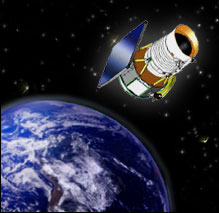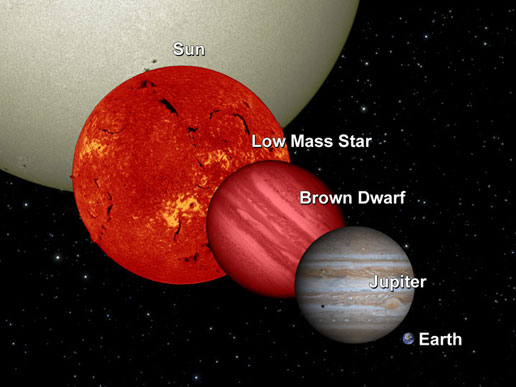 |
 |
Mission: Wide-field Infrared Survey Explorer (WISE)
Launch Vehicle: Delta II 7320
Launch Site: Vandenberg Air Force Base - SLC 2
Launch Time: 6:10 – 6:23 a.m. PST / 9:10 - 9:23 a.m. EST
Description: This mission will survey the entire sky in the mid-infrared with far greater sensitivity than any previous mission or program ever has. The WISE survey will consist of over a million images, from which hundreds of millions of astronomical objects will be cataloged.
WISE is a NASA-funded Explorer mission that will provide a vast storehouse of knowledge about the solar system, the Milky Way, and the Universe. Among the objects WISE will study are asteroids, the coolest and dimmest stars, and the most luminous galaxies.
WISE is an unmanned satellite carrying an infrared-sensitive telescope that will image the entire sky. Since objects around room temperature emit infrared radiation, the WISE telescope and detectors are kept very cold (below -430° F /15 Kelvins, which is only 15° Centigrade above absolute zero) by a cryostat -- like an ice chest but filled with solid hydrogen instead of ice.
Solar panels will provide WISE with the electricity it needs to operate, and will always point toward the Sun. Orbiting several hundred miles above the dividing line between night and day on Earth, the telescope will look out at right angles to the Sun and will always point away from Earth. As WISE orbits from the North pole to the equator to the South pole and then back up to the North pole, the telescope will sweep out a circle in the sky. As the Earth moves around the Sun, this circle will move around the sky, and after six months WISE will have observed the whole sky.
As WISE sweeps along the circle a small mirror scans in the opposite direction, capturing an image of the sky onto an infrared sensitive digital camera which will take a picture every 11 seconds. Each picture will cover an area of the sky 3 times larger than the full Moon. After 6 months WISE will have taken nearly 1,500,000 pictures covering the entire sky. Each picture will have one megapixel at each of four different wavelengths that range from 5 to 35 times longer than the longest waves the human eye can see. Data taken by WISE will be downloaded by radio transmission 4 times per day to computers on the ground which will combine the many images taken by WISE into an atlas covering the entire celestial sphere and a list of all the detected objects.
 |
NASA's Wide-field Infrared Survey Explorer, or WISE, will uncover many "failed" stars, or brown dwarfs, in infrared light. This diagram shows a brown dwarf in relation to Earth, Jupiter, a low-mass star and the sun.
Stars with less mass than the sun are smaller and cooler, and hence much fainter in visible light. Brown dwarfs are the smallest and coolest of stars. They have less than eight percent of the mass of the sun, which is not enough to sustain the fusion reaction that keeps the sun hot. These cool orbs are nearly impossible to see in visible light, but stand out when viewed in infrared. Their diameters are about the same as Jupiter's, but they can have up to 80 times more mass and are thought to have planetary systems of their own.
NASA's Jet Propulsion Laboratory, Pasadena, Calif., manages the Wide-field Infrared Survey Explorer for NASA's Science Mission Directorate, Washington. The mission's principal investigator, Edward Wright, is at UCLA. The mission was competitively selected under NASA's Explorers Program managed by the Goddard Space Flight Center, Greenbelt, Md. The science instrument was built by the Space Dynamics Laboratory, Logan, Utah, and the spacecraft was built by Ball Aerospace & Technologies Corp., Boulder, Colo. Science operations and data processing take place at the Infrared Processing and Analysis Center at the California Institute of Technology in Pasadena. Caltech manages JPL for NASA.
Image Credit: NASA/JPL-Caltech/UCB.More information is online at:- http://www.nasa.gov/wise and http://wise.astro.ucla.edu.
For photos also have a look at:- http://www.facebook.com/pages/WISE-Mission/124848262603?v=photosFor Delta-II rocket info look at:- http://www.boeing.com/defense-space/space/delta/delta2/delta2.htm